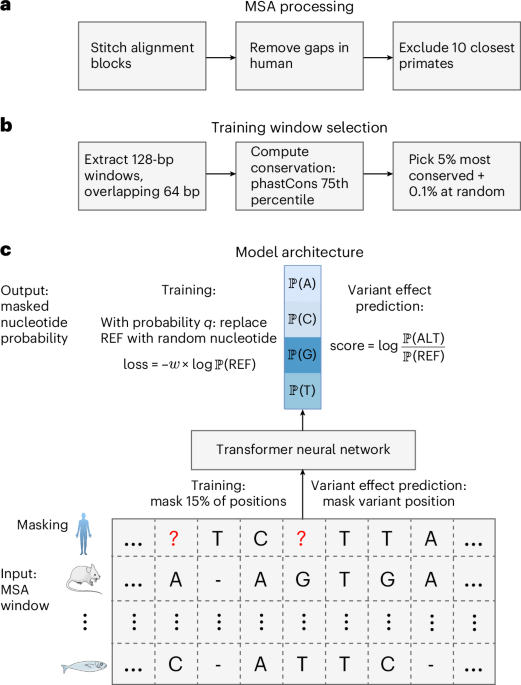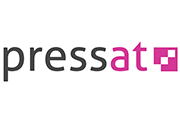From risk to reward: Mastering the art of adopting emerging technologies

Technology tamfitronics
by Jim Wilt, CTO/Distinguished Architect, WVE
Opinion
Oct 08, 202411 mins
Emerging TechnologyGenerative AI
Technology tamfitronics Tired of getting burned by overhyped tech? Learn how to balance innovation with risk management, avoid common pitfalls, create a strategic approach to adopting the bleeding edge to stay ahead of the curve.
One of the greatest things about working in technology is the surprise advancements that take the industry by storm.
Things like:
- The personal computer
- The internet
- The cloud
- Blockchain
- The Internet of Things (IoT)
- Generative artificial intelligence (genAI)
One of the worst things about working in technology is the surprise advancements that take the industry by storm.
Why?
- Hype quickly surpasses reality.
- Whatever it is, it will steal everyone’s job.
- There is no way it will ever be secure.
- There is a race to be the first to expose your leveraging of it.
- Nobody knows what it is, what it really does, and you must become an expert in short order.
You need to explain in great detail what it is and what it does, and identify business use cases for how it can be leveraged to better your organization, BEFORE you’ve even touched it!
A bleeding-edge technology is one that takes the industry by storm because it creates a significant paradigm shift into how things currently work with the potential to majorly impact the industry itself.
The typical reaction is to ban any use of it until you can figure out what it is, what it does, how it will benefit your business and how you can safely and securely deploy it.
But is this really wise? Do you really benefit by awaiting others to figure it out for you and then sell you their services — when they know little to nothing about your business? Does your organization benefit by others mastering emerging technologies before your resources?
For most enterprises, the answer, unfortunately, is yes.
For those rare enterprises where innovation is more than a bullet point on a strategy statement embedded deep inside their SEC 10K, there is a repeatable approach for addressing the emerging unknown with great certainty.

Jim Wilt
There are two major factors at play here:
- The technology is maturing & regularly changing at the bleeding edge.
- Your talent’s skills are maturing as they get up to speed on the new tech.
It pays to greatly and humbly respect these two factors. Let’s dive into it!
But first…the danger zone
Things you should avoid from the outset:
Articulate a business use case. Why? There are two traps to avoid here:
- You don’t yet know the bounds of the new tech.
- You might commit to hype the tech is never intended to deliver.
Expose the tech to your customers/constituents too soon. Why? Mistakes will happen:
- Either the tech itself or your misuse of the tech may do public reputational damage.
- You risk adding to the hype where there will be no observable value.
Throw the emerging tech to a similar-themed team by default. Why? Several reasons:
- The nature of the tech may be exactly the opposite of their experience (value in cloud-native was missed because organizations focused on IaaS; genAI is, by definition, significantly different from traditional Predictive AI).
- Teams heavily vested in one paradigm often see the new tech as a threat
Subscribe to single vendor/platform alliances. Why? Emerging tech leaders change continually:
- Early on, the multiple providers will regularly leapfrog each other and not all contenders will survive.
- With early releases, APIs, contracts and payloads will regularly change alienating code commitments from one release to the next (e.g., OpenAI 2 to 3 to 4 all experienced significant API changes) resulting in version lock-ins.
Jumping into any of these danger zone traps too often will cause a poor experience that pushes organizations into total abandonment. The expression, “We tried that, and it didn’t work” is not a wise realization because adopting a bleeding-edge technology is about its potential, not its current state.
A wise and safe approach
There is real merit in Gall’s Law: “A complex system that works is invariably found to have evolved from a simple system that worked.”
Start small. Start simple. Evolve.
The learning phase
Two key grounding musts:
- Non-mission critical workloads and (public) data
- Internal/private (closed) exposure
This ensures no corporate information or systems will be exposed to any form of risk.
Create a small virtual team of enthusiasts that will strive to ensure success. The premise here is to learn how to leverage emerging technology to benefit your organization.
- If it is a complete failure, you’ll have that knowledge from those who tried hardest to make it work, not those who didn’t want it in the first place.
- Empower the team to leverage the tech unabated.
- Try multiple versions and vendors of the tech. This ask may seem daunting; however, it will turn out to be much easier than anticipated and the learning of when to use which tech will be invaluable.
Because it is non-mission critical/internal-only, there is no need for restrictions — yet. They will come later.
Learn & adapt the tech as it is intended to be used/leveraged. Engulf in its full glory (playing is one of the best forms of learning). This allows the team to truly identify the “goodness” the tech offers.
Now, break it. Take the tech outside its operating limits to understand how it fails when pushed outside its bounds. Determine as many failure scenarios as possible to get a real sense of the ramifications associated with its failures.
Learn security impact by the exercises described to understand what the new tech does with your public data and test the safeguards it purports. Try to breach its protection of your public data.
Always monitor cost, performance and quality.
By the end of this phase, you’ll have a solid understanding of what the tech can do, can’t do and the security boundaries at its current state. There may be some inklings around business cases, but it still is too soon to head down that path.
The growing phase
The virtual team will certainly know more than the basics at this point so they now can experiment with:
- Mission-critical workloads and (private) data
- Internal/private (closed) exposure
With real data & systems at play, great attention to security policy & practices must now be deeply engrained in every step moving forward (playtime is now over).
Focus on internal efficiencies and optimizations that have distinct measurable outcomes. Don’t (yet) worry about business use cases. Internal tech use cases are where the team will surely know if positive impact is being made. For example, while genAI was initially intended for content generation, early adopters leveraged it for code generation and determined it greatly augmented development, shortening delivery cycles.
Replaceable, not reusable. This may sound strange; however, it is paramount to architect and write code to be replaced on a moment’s notice. The new tech will not yet be stabilized, and your code will need to readily change to:
- Adapt to API and contract changes in the tech. There are no victims of tech changes when solutions are architected and developed to readily accommodate major changes to interfaces and integrations.
- You need to switch the tech vendor/platform. It is important to emphasize the necessity to be polyglot with the tech as it may become obsolete during its maturing. You’ll also need to know when each tech platform is best used and most cost-effective.
Secure as you mature. As both the new tech and your team’s skills mature, leverage the emerging best practices as they evolve. For example, during the learning phase of genAl, you might have uploaded public data into a retrieval-augmented generation (RAG) to experiment with customizations. Now that the team is in the growing phase, a more secure approach is to build Agentic RAGs that do not upload any data into the platform.
Understand when higher-cost approaches are warranted and when lower-cost approaches are acceptable. Leverage this knowledge in your architecture and designs.
The landing phase
The virtual team will be at a high level of performance with the new, emerging tech. They are now ready for:
- Mission-critical workloads and (private) data
- External/public (open) exposure
This can be done with the highest confidence as both tech and skills are stabilizing. It’s time to publish architectural patterns, best practices and promote sensible adoption.
Identify and introduce meaningful business use cases that directly affect customer value streams. Again: Start small. Start simple. Evolve.
Focus on advancing all use cases by sharing and promoting when the emerging tech adds value to the rest of your organization. Be sure to separate “new cool tool” syndrome from real applied value.
Test the customer waters. Before sharing your new, cool, offering to the world, test it with customer focus groups and early adopters. Leverage their feedback to identify blind spots and mitigate misinterpretations.
And always monitor cost, performance and quality.
Wait, there’s more…
99.999% of your patterns, reference architectures/implementations and best practices will need to evolve over the next couple of years.
Why?
- The technology is simply too young to lock into.
- Platforms will evolve to incorporate many of the customizations and integrations initially required to be built by your team (remember: replaceable, not reusable).
- Security will continually evolve and mature requiring updates along the way.
- Others will build upon the basics to offer even greater capabilities (e.g., look at what LangChain and AutoGen have done for genAl).
When you get into a rhythm of embracing emerging, bleeding-edge technology, there’s only one thing left to say:
One of the most rewarding things about working in technology is the surprise advancements that take the industry by storm.
Jim Wilt, an accomplished innovator with 40 years of experience in technology from aerospace to cloud and operating systems to health and financial organizations, is a board-certified distinguished chief architect at WVE. He has been contributing to the architecture profession worldwide for 30 years through the Microsoft Architecture Advisory Board (MAAB), Microsoft Certified Architect (MCA), as an Open Group Digital Practitioner and through the Iasa CITA-P/D and BTABOK. His passion for the advancement of bleeding-edge technologies has him leading genAI augmented software and platform modernization/digital transformation at Fortune 100 organizations today.
SUBSCRIBE TO OUR NEWSLETTER
From our editors straight to your inbox
Get started by entering your email address below.



 Hot Deals
Hot Deals Shopfinish
Shopfinish Shop
Shop Appliances
Appliances Babies & Kids
Babies & Kids Best Selling
Best Selling Books
Books Consumer Electronics
Consumer Electronics Furniture
Furniture Home & Kitchen
Home & Kitchen Jewelry
Jewelry Luxury & Beauty
Luxury & Beauty Shoes
Shoes Training & Certifications
Training & Certifications Wears & Clothings
Wears & Clothings
















